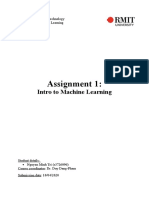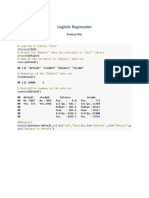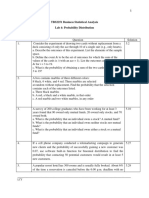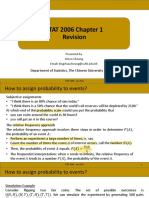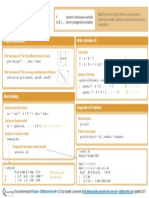0% found this document useful (0 votes)
94 views15 pagesBda Assign
The document discusses analyzing various datasets using Python. It includes:
1. Loading and exploring the 'Tips' dataset, including plotting histograms and bar charts to analyze distributions.
2. Splitting the 'Iris' dataset into training and test sets, then building and comparing KNN and logistic regression models to classify flower types and evaluate accuracy.
3. Using logistic regression on an admissions dataset to predict student acceptance based on GRE, GPA, and rank, and checking model fit.
4. Demonstrating a decision tree classifier on the Iris dataset to evaluate performance.
Uploaded by
Aishwarya BiradarCopyright
© © All Rights Reserved
We take content rights seriously. If you suspect this is your content, claim it here.
Available Formats
Download as DOCX, PDF, TXT or read online on Scribd
0% found this document useful (0 votes)
94 views15 pagesBda Assign
The document discusses analyzing various datasets using Python. It includes:
1. Loading and exploring the 'Tips' dataset, including plotting histograms and bar charts to analyze distributions.
2. Splitting the 'Iris' dataset into training and test sets, then building and comparing KNN and logistic regression models to classify flower types and evaluate accuracy.
3. Using logistic regression on an admissions dataset to predict student acceptance based on GRE, GPA, and rank, and checking model fit.
4. Demonstrating a decision tree classifier on the Iris dataset to evaluate performance.
Uploaded by
Aishwarya BiradarCopyright
© © All Rights Reserved
We take content rights seriously. If you suspect this is your content, claim it here.
Available Formats
Download as DOCX, PDF, TXT or read online on Scribd
/ 15




































